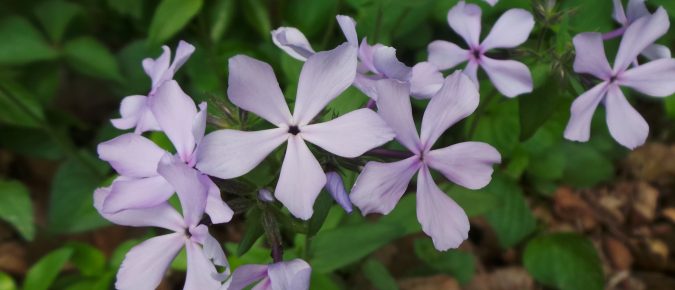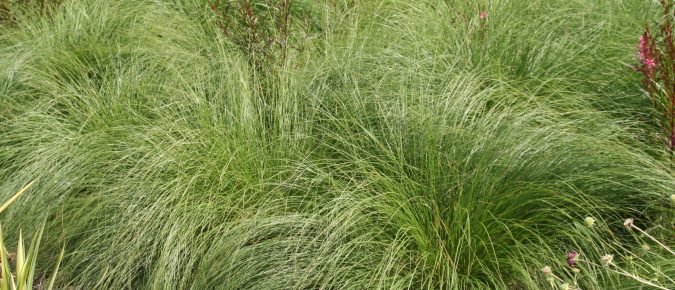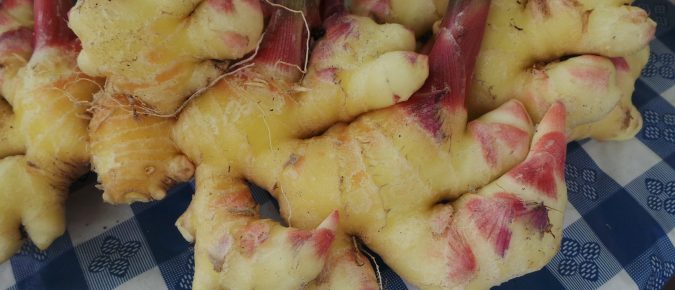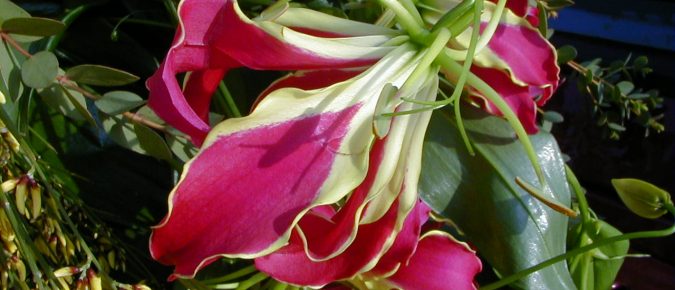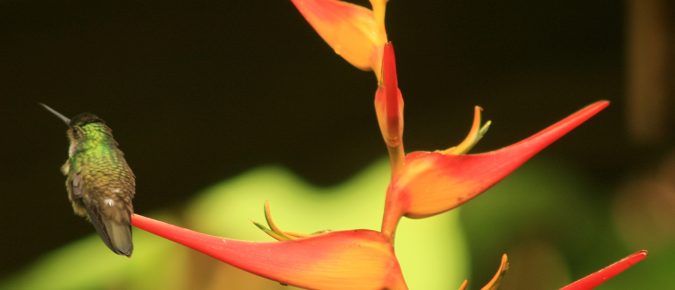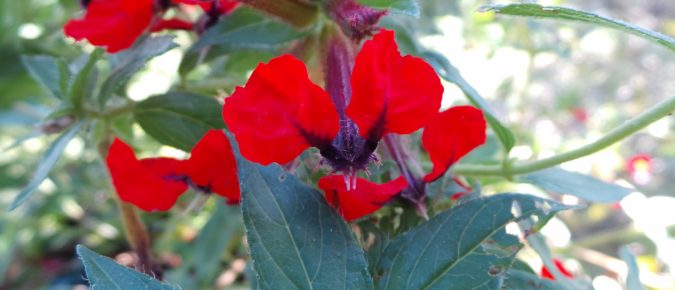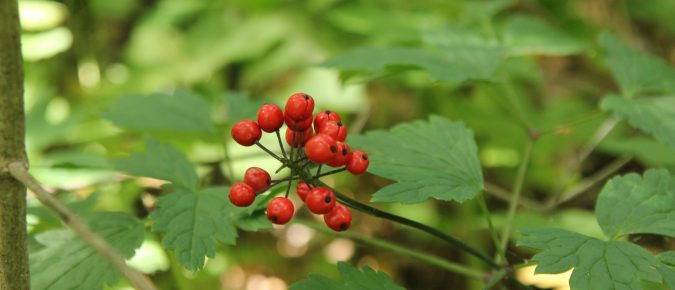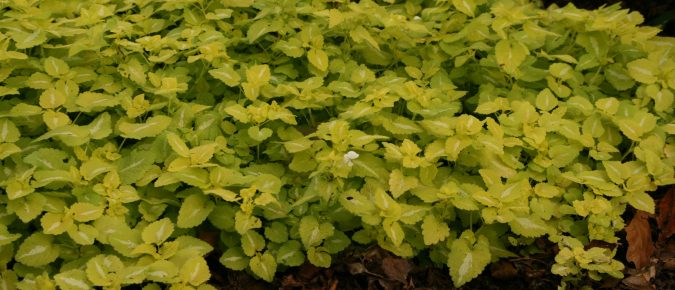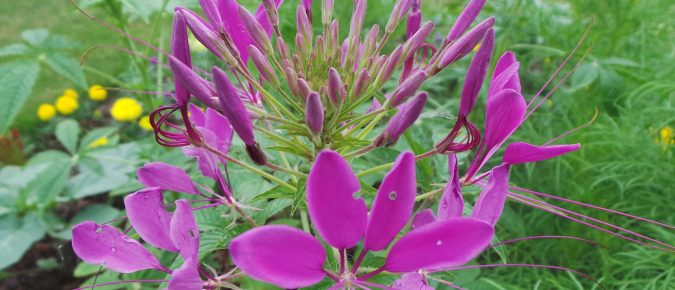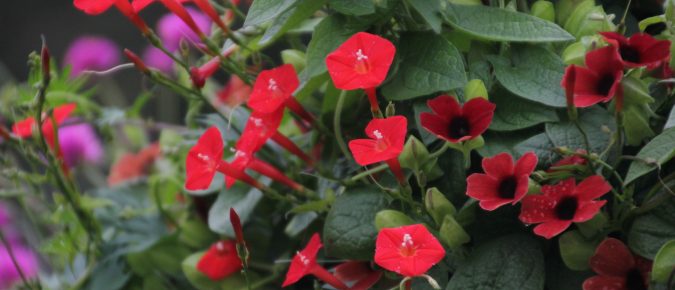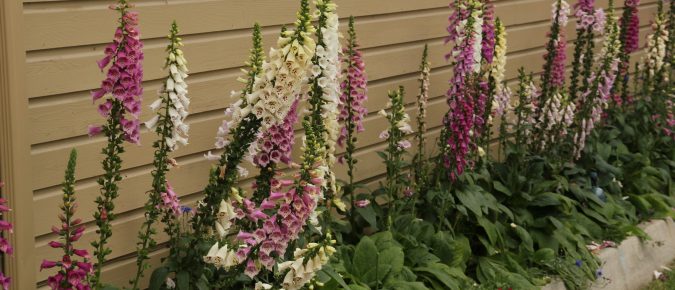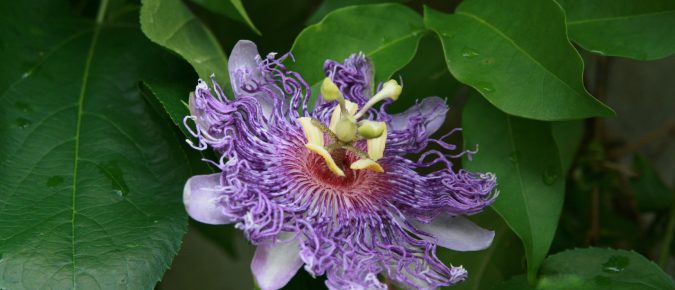For soft blue flowers in partly shady spots in spring, nothing beats woodland phlox. This North American native thrives in dappled shade and moist, well-drained soils. With an open, relaxed habit it fits well in informal shady beds, rock gardens and wild or naturalized areas. Learn more about this pretty late spring to early summer bloomer in this article…
One of the showiest prairie grasses, Sporobolus heterolepis is frequently cultivated as an ornamental for its attractive fountain of fine textured, emerald-green leaves, delicate flower and seed heads, and colorful fall color. Learn more about this elegant native North American bunchgrass that makes a great addition to almost any type of landscape…
Many species of tropical gingers are grown for their flashy blooms, but the plants of culinary ginger aren’t particularly ornamental. Instead, culinary ginger is grown for the aromatic rhizomes which are the source of the hot, pungent flavor enjoyed in ginger ale, gingerbread and many Asian foods. Learn more about this tropical plant which is surprisingly easy to grow in containers…
The exotic flowers of gloriosa lily, with their amazing color and an unusual shape, make a flamboyant statement in the garden or in a container on a patio. This twining perennial vine with tendrils coming from the tips of the leaves grows from a tuberous rhizome to produce the striking flowers in summer and fall. Learn more about this climber native to Africa and Asia in this article…
For most Midwesterners, if they recognize a heliconia at all, it’s as a brightly colored, long-lasting component of a bouquet of tropical flowers. The genus Heliconia is a large group of plants native to tropical areas of the Americas with banana-like leaves and conspicuous inflorescences. Learn more about these showy, interesting plants in this article…
At this time of year Halloween-themes dominate, with pumpkins, ghosts and bats abounding, so in that spirit here’s a Halloween-themed flower: bat-faced cuphea. The name comes from the resemblance of the unique flowers to a little bat face when viewed from the right angle. Learn more about this Mexican native which is often offered as an annual in cool climates…
With finely cut foliage that remains attractive through the growing season and conspicuous fruit which provide ornamental interest into the fall, red baneberry and white baneberry are two similar woodland plants that can be great additions to shady gardens. These species do have poisonous fruit, so need to be used with caution. Learn more about these native perennials …
Look no further than spotted deadnettle for a tough but showy groundcover. With variegated leaves that shine in shade and a long bloom time, Lamium maculatum is an eye-catching plant throughout the year. Choose from cultivars with green and white striped or silver leaves and white, purple or pink flowers. Learn more about this adaptable, low-growing perennial in this article…
Spider flower is fast growing, self-seeding annual with delicate and airy flowers in showy, exotic looking heads of pink, white or purple. These eye-catching plants provide a splash of color from summer through frost when planted in mass or as a backdrop for shorter companions in the annual or mixed garden. Learn more about this cottage garden favorite in this article…
Looking for a vigorous annual vine to quickly cover a trellis, fence or arbor? Cardinal climber offers attractive, ferny foliage and bright red flowers later in the season which are very attractive to hummingbirds. Learn more about this heirloom ornamental with few pests and little maintenance requirements in this article…
With tall, showy spikes of tubular pink or purple flowers with speckled throats, common foxglove is a common addition to informal gardens for vertical interest. This biennial from Western Europe forms a rosette of leaves the first year and blooms in the second year. Learn more about Digitalis purpurea – the original source of the heart medicine digitoxin – but also considered an invasive weed in many places…
Everyone has a vision of what a “flower” looks like, but plant flowers are extremely variable and come in all shapes, sizes, colors, and configurations. Take a virtual tour of a dozen weird and wonderful flowers, each from a different plant family, and learn about some of their interesting characteristics, pollinators, or uses. No daisies here…

